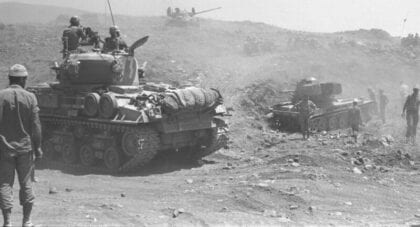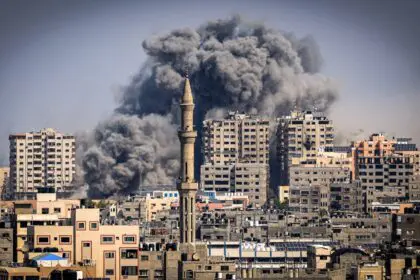A military conflict that lasted for 34 days in 2006, involving Lebanon, Israel and the Golan Heights, was known as the July War in Lebanon, the Second Lebanon War in Israel, and the 2006 Israel–Hezbollah War in other countries.
The Israel-Hezbollah War of 2006
Mid-2000, Israeli forces were forced to withdraw from most of southern Lebanon as a result of mounting losses inflicted mostly by Hezbollah. In 2000 the last Israeli soldier left Lebanese soil – though Hezbollah claims the Shebaa Farms that remained under control of the Israeli military, are Lebanese territory.
The situation in the border area remained tense afterwards. While Hezbollah operated in the hills and villages south of the border, Israel thought it was safe behind a high-tech border defence, equipped with the latest intelligent sensors, automatic weapon stations and frequent patrols. However, as so often proven in warfare, one should not solely rely on sophisticated systems – the creativity of the human brain to outfox machinery should not be underestimated. In 2006 Israel underestimated Hezbollah.
The highest Israeli military authority, General Dan Halutz, divulged in 2005 the doctrine of his armed forces in 2005: ‘We want to be the first to know, the first to understand, the first to decide and the first to act.’ The Israeli Defence Forces (IDF) could, according to this ‘concept of operations’, choose the time and place to act decisively, against all opponents, including Hezbollah. ‘Training and technology give us the opportunity to attack terrorists pre-emptively whenever they approach the Lebanese border,’ Halutz’s statements displayed great confidence.
Hezbollah ambush
This confidence was shattered however, when, on 12 July 2006, Hezbollah commandos penetrated the high-tech barrier on the Lebanese border and sabotaged a camera. When a called-in Israeli patrol approached the defunct sensor the trap was sprung. Eight Israeli soldiers were killed in the ambush and two were taken prisoner.
Immediately after the ambush Israeli military commentators stated that the high-tech border had proven to be a ‘Maginot-line’ and that the Israeli Armed Forces had trusted it too much. This ‘techno-optimism’ was not limited to the border defences, but also the Tzayad-program, the total digitization of the army. Israeli generals complained that the budget for these types of fancy programs always came at the expense of the funds for simple training.
Israeli reaction
From a tactical point of view the Hezbollah ambush was a success. More would follow. For example, when the elite Israeli Egoz reconnaissance unit crossed the border, under the cover of darkness, to occupy the village of Bint Jbeil, they encountered heavy resistance. Apparently, the Hezbollah fighters were also equipped with night vision goggles and had followed the approaching columns of Israeli soldiers. It took three days to take the village, despite the fact that it was only a few kilometres from the border. Hezbollah made extensive use of anti-tank missiles, which inflicted damage on the Israeli Merkava tanks, considered by some analysts to be the best in the world.
A heavy-handed Israeli response did not take long to materialize. The Israeli Air Force started to pound the area in Beirut where Hezbollah had its powerbase. Neighbourhoods were turned into rubble. The Israeli intelligence services had been able to locate the larger rocket launchers in Hezbollah’s inventory. F-16s and F-15s were able to destroy these in an early stage. No rockets landed in the Israeli heartland.
In another example of Israeli unpreparedness, the fighter-bombers, counter battery radar, artillery and Unmanned Aerial Vehicles were unable to stop, or even stem the salvos of smaller rockets that reached Israeli soil, more than two hundred a day – until the very last stage of the war. Most of them exploded without causing damage. However, many thousands of Israeli citizens fled to the southern parts of the country, due to the rocket attacks.
Whether the Hezbollah boldness was a strategic success remains a topic of discussion. After the guns fell silent (August 14), it turned out that around 250 Hezbollah fighters had been killed, and no less than 1,200 Lebanese civilians. The infrastructure was badly damaged. In addition, 121 Israelis had lost their lives.
History of the Palestinian-Israeli Conflict
This article is part of our coverage of the history of the Palestinian-Israeli Conflict.
Fanack’s historical record meticulously chronicles the Palestinian-Israeli Conflict in a chronological sequence, encompassing its origins, crises, wars, peace negotiations, and beyond. It is our most exhaustive historical archive.



